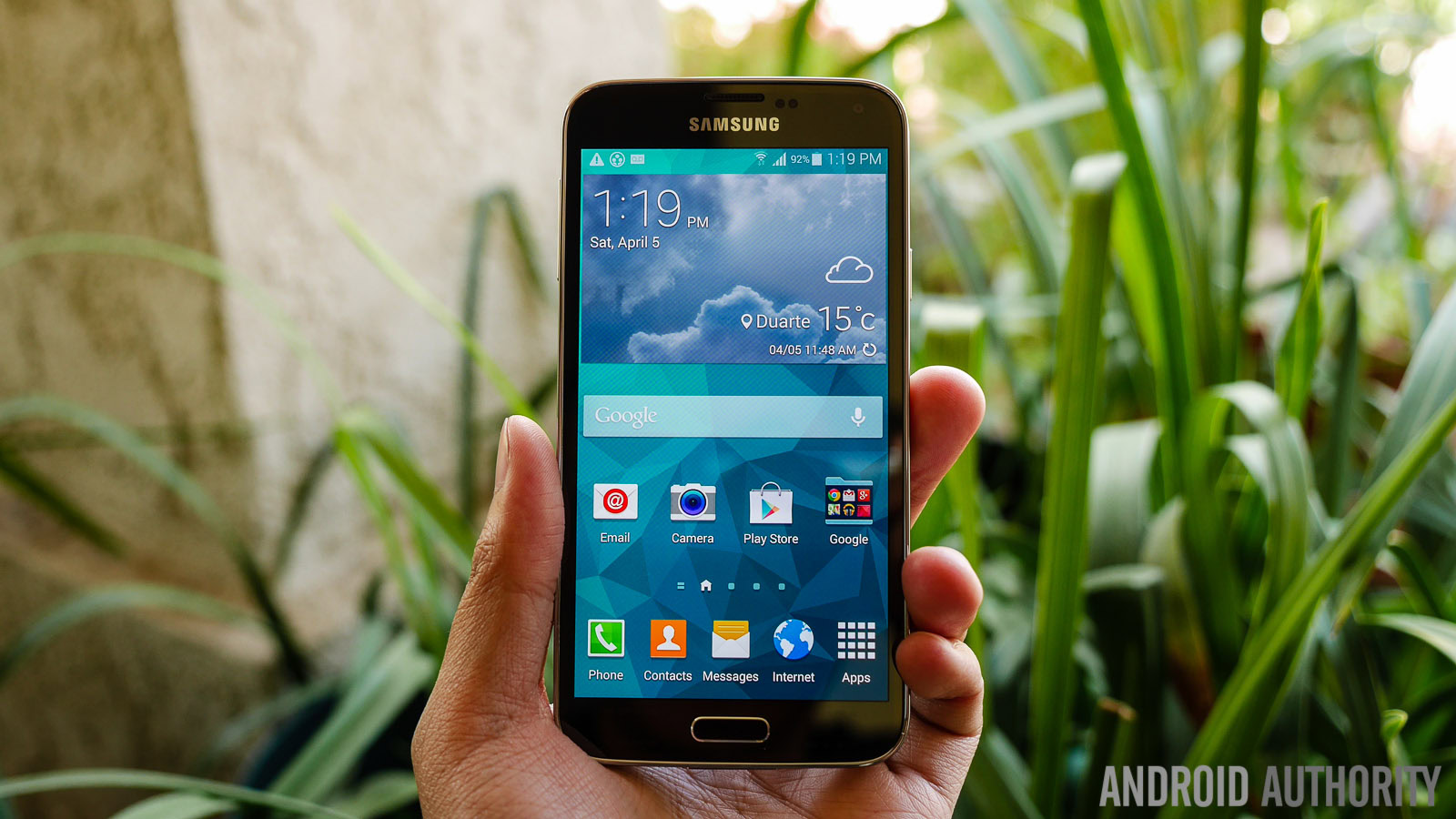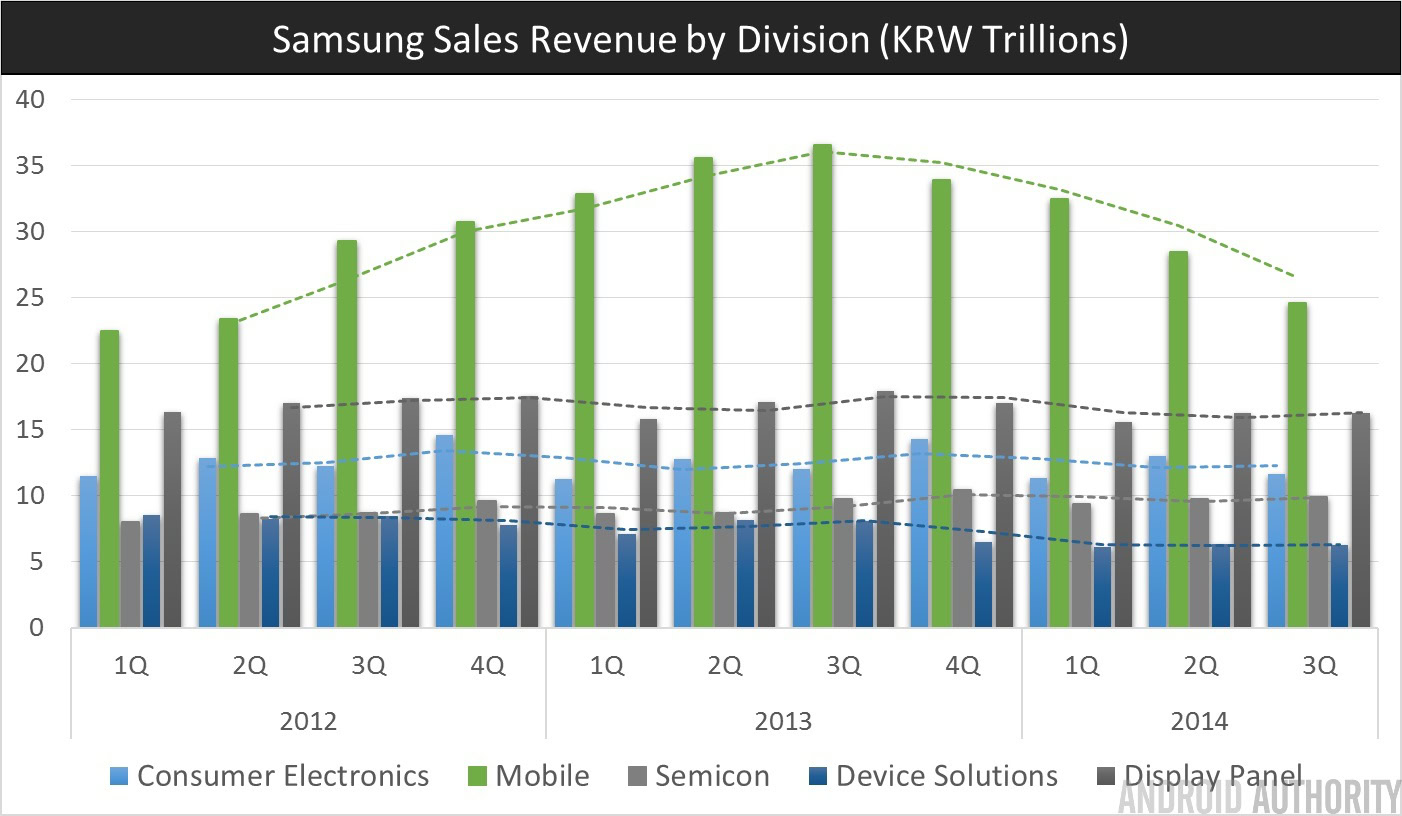Affiliate links on Android Authority may earn us a commission. Learn more.
Samsung has sold 40% fewer Galaxy S5 units than it had anticipated - WSJ
November 24, 2014


It’s interesting how things can change over a short span of time. Just a few years ago, the tech world was caught up in the legal turmoil between Samsung and Apple, but now mention of the Korean giant is all about sluggish sales, cutting product lines, and even a possible management upheaval.
Thanks to a recent report by The Wall Street Journal, another layer of the lethargy has been exposed: Samsung has sold 40% less Galaxy S5 handsets than it had anticipated. According to people familiar with the matter cited by WSJ:
- Samsung made 20% more S5 units than S4, following demand predictions made by carriers.
- Roughly 12 million S5 units were sold in the three months following release, compared with 16 million for the S4.
- In all, Samsung sold 40% fewer Galaxy S5 units than it had anticipated.
- One market where Samsung sold more S5 units than S4’s is the US.
- Samsung’s second largest market, China, saw a 50% decrease of sales between the S4 and S5 in the first six months of release.
What is the explanation?
There are a few possibilities to explain this:
1. Consumer Apathy: As many felt the need to point out, the Galaxy S5 ultimately failed to live up to the lofty expectations the tech community dreamt up. Images of QHD screens and liquid metal frames, for example. Some of the missing components, however, were quite avoidable, namely the lack of OIS. Additionally given that Samsung was prepping the Galaxy Alpha around the same time, it’s curious as to why the S5 didn’t feature a metal frame. Were production issues at play here, or was the company simply trying to push the plastic for yet another year in hopes of getting away with it?
2. Satisfaction: The Galaxy S4 was very well received. Despite the widespread bashing of Samsung’s plastic parts, the phone offered top of the line specs and a Full HD screen. Truth be told, there was actually very little to separate the S4 and S5 spec-wise, save for the CPU update, waterproofing, and fingerprint sensor. Whereas Apple has legions of fans that will plunk down cash for a new iPhone every year, it’s possible consumers simply didn’t see enough reason to buy an S5 when their S4 (or even S3) was still satisfactory.
3. Competition: While obviously a factor in this equation, the extent is somewhat up in the air. We all know that Xiaomi had a fantastic third quarter, and Samsung suffered big time, but how many people bought a competitor’s flagship over the S4 is somewhat difficult to determine, especially when the previous two factors are considered. With some devices in particular, such as the OnePlus One, the price is so low that it almost fits into an entirely different market. This factor is probably the largest reason for the sharp decrease of S5 sales in China, where there are so many domestic competitors.

One thing is quite clear: Samsung is not only facing increased pressure from rival OEMs, but its own device lineup may have reached a saturation point, such that the law of diminishing returns will dictate the next devices can never have the same impact as the earlier ones. Sure, the Galaxy S6 will probably have a QHD screen, may have 3GB of RAM, and will inevitably have a new design. Still, for all those who don’t care about the latest and greatest, there is technically nothing wrong with the current devices. Likewise, why would they need to purchase Samsung at a premium price when cheaper alternatives are available?
For this reason, it makes perfect sense that Samsung has sought to create truly unique products, such as the recent Galaxy Note Edge, and plans to release a foldable smartphone by the end of next year. The company also pledged to cut down the number of smartphone models it manufactures by up to 30 percent and restructure its software efforts. Given the costly nature of this venture however, it’s somewhat questionable as to if these steps are truly going to solve its financial woes.